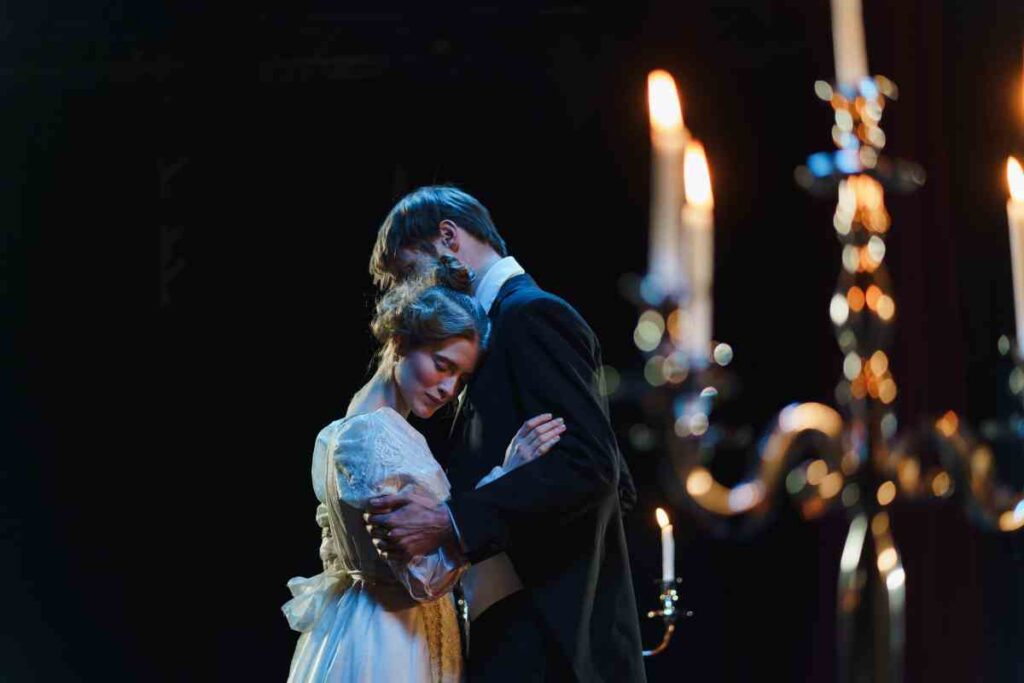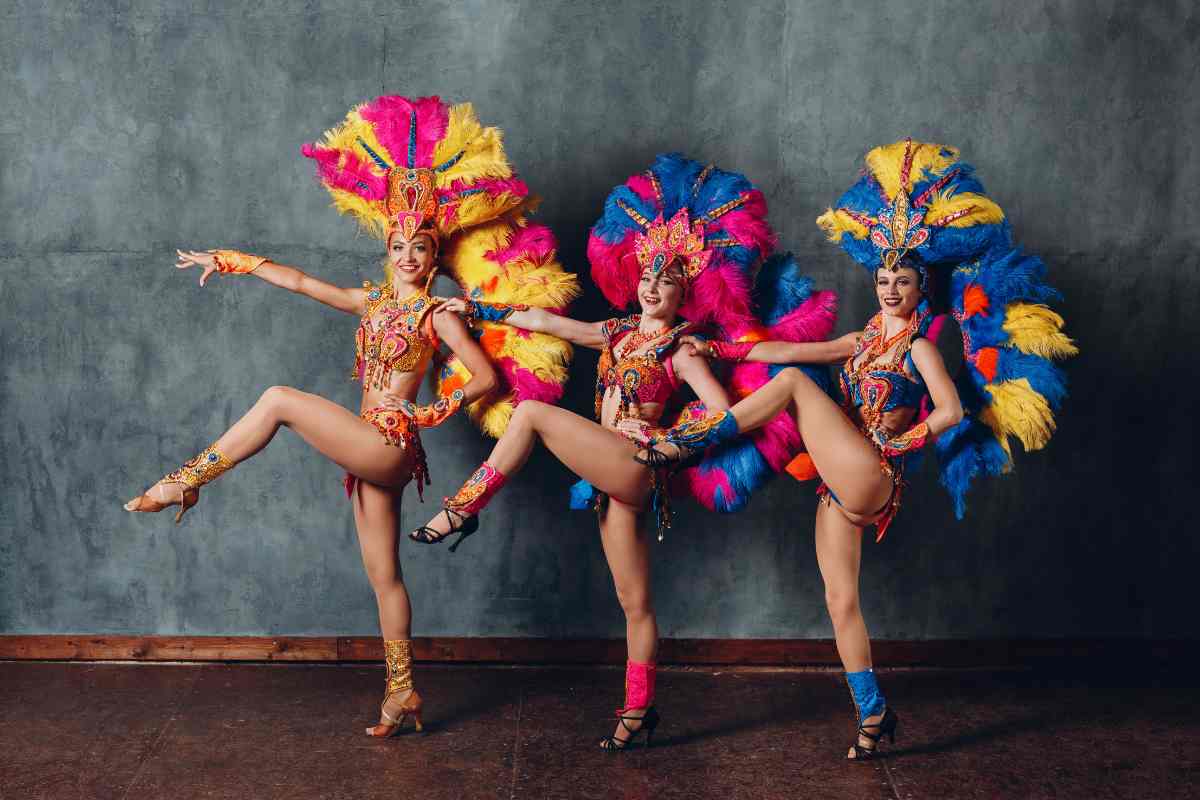Costumes play a pivotal role in the filmmaking process, serving as essential elements that contribute to a movie’s overall visual and narrative impact. The significance of costumes extends beyond mere aesthetic appeal; they are potent tools filmmakers employ to convey character traits, establish periods, and immerse audiences in the cinematic experience. Well-designed costumes not only enhance the authenticity of a film but also contribute to the emotional resonance of characters, making them more relatable and memorable to viewers.
Role in Enhancing Characterization
One of the primary functions of costumes in movies is to aid in the characterization process. Costume choices are deliberate decisions filmmakers make to visually communicate key aspects of a character’s personality, occupation, social status, or even psychological state. Through carefully selecting clothing, accessories, and overall wardrobe aesthetics, costume designers collaborate with filmmakers and actors to bring characters to life. This visual language helps to establish a character’s identity, providing subtle cues that inform the audience about the individual’s background, motivations, and evolution throughout the storyline.

Costume Creation Process
Costume Design: Collaboration with Costume Designers
The journey of creating costumes for a movie begins with a collaborative effort between filmmakers and costume designers. Costume designers work closely with directors, producers, and other key stakeholders to understand the vision of the film and the specific requirements for each character. This collaborative process involves discussions about the characters’ personalities, backgrounds, and the movie’s overall visual style.
Consideration of Character Traits and Storyline
Costume designers meticulously analyze the script, identifying nuances in character traits and narrative arcs. They consider elements such as historical context, cultural influences, and the overall thematic tone of the film. This careful consideration ensures that costumes not only align with the characters but also seamlessly integrate with the storyline, contributing to the overall coherence of the cinematic narrative.
Costume Fabrication: Selection of Materials
Once the costume design is finalized, the next step involves selecting appropriate materials. The choice of fabrics and materials is crucial, as it influences the costumes’ visual impact, comfort, and functionality. Whether creating period-specific attire or futuristic outfits, costume designers work with diverse materials to achieve the desired look and feel.
Tailoring and Construction
The actual fabrication of costumes involves skilled tailoring and construction. Costume designers collaborate with a team of costume makers, tailors, and craftsmen to bring their designs to life. Precision and attention to detail are paramount during this phase, ensuring that the costumes fit the actors comfortably and authentically reflect the envisioned characters. This process may involve traditional sewing techniques and the integration of modern technologies for complex or specialized costumes.
More Post: What are the most ridiculous Halloween costumes?
More Post: Why is costume important in drama?
Filming Process-On-Set Wardrobe Department
Costume Fittings
During filming, the on-set wardrobe department plays a crucial role in ensuring that costumes align seamlessly with the vision established during the pre-production phase. Costume fittings are essential sessions where actors try on their costumes, allowing costume designers and wardrobe professionals to make any necessary adjustments. The goal is to achieve a perfect fit that enhances the characters’ visual appeal and ensures the actors’ comfort and mobility during filming.
These fittings are collaborative sessions involving costume designers, wardrobe supervisors, and actors. Adjustments may include alterations to sizing, hemming, or tailoring to accommodate the specific needs of each scene. The careful attention to detail during costume fittings contributes to the overall authenticity and believability of the characters on screen.
Continuity Maintenance
Maintaining continuity in costumes throughout a film is a meticulous task undertaken by the on-set wardrobe department. Since movies are often shot out of sequence, it is imperative to ensure that costumes remain consistent in appearance and wear from one scene to the next. Wardrobe professionals keep detailed records of each costume, noting specific details such as accessories, hairstyles, and makeup to replicate the exact look during subsequent shoots.
Continuity maintenance is crucial for preserving the visual integrity of the film and avoiding distractions for the audience. Any deviations in costume continuity can disrupt the narrative flow, drawing attention away from the story and impacting the overall viewing experience.
Challenges during Filming-Stunts and Special Effects
Filming action sequences, stunts, and scenes involving special effects pose unique challenges for costume designers and the on-set wardrobe department. Safety considerations may require costume modifications to accommodate protective gear, harnesses, or other stunt equipment. Additionally, the wear and tear on costumes during physically demanding scenes may require quick repairs or replacements to maintain continuity.
Costume designers collaborate closely with stunt coordinators and special effects teams to ensure that safety measures do not compromise the visual integrity of the costumes. This collaborative effort aims to balance the practical needs of filming challenging scenes and preserving the aesthetic quality of the costumes.
Multiple Takes and Scenes
The nature of filmmaking often involves shooting multiple takes of a scene to capture the desired performances and angles. This repetition can present challenges for costume maintenance. Costumes may experience wear and tear, and actors may sweat or encounter unforeseen incidents that impact the condition of their wardrobe.
The on-set wardrobe department must be agile and responsive, addressing issues between takes. Quick repairs or costume changes may be necessary to maintain consistency throughout the various iterations of a scene. The ability to adapt to the demands of multiple takes is a testament to the skill and efficiency of the on-set wardrobe team, ensuring that costumes remain pristine and accurate to the director’s vision throughout the filming process.
Cleaning and Maintenance
After filming, costumes undergo meticulous cleaning and maintenance to preserve their quality and integrity. The on-set wardrobe department or specialized costume preservation teams work to remove any stains, sweat, or other signs of wear accumulated during filming. The cleaning process is tailored to the specific fabrics and materials used in each costume, ensuring it is thorough and gentle to avoid damage.
Costume designers may collaborate with textile conservators or experts in costume restoration to address any unique challenges posed by intricate designs, embellishments, or historical accuracy. Proper cleaning not only extends the lifespan of the costumes but also prepares them for potential reuse in sequels, spin-offs, or exhibitions.
Storage Techniques
Once cleaned and maintained, costumes are carefully stored using specialized techniques to prevent deterioration. The choice of storage methods depends on factors such as fabric type, costume complexity, and the desired preservation timeline. Some costumes may be hung on padded hangers in climate-controlled environments to prevent creasing, while others may be stored in archival garment bags to protect against dust and light exposure.
Additionally, accessories and accompanying wardrobe items are cataloged and stored alongside the costumes to ensure completeness if needed for future use. Detailed records, including photographs and documentation of any alterations or repairs, are often maintained to facilitate efficient retrieval and reintegration into filmmaking.
Repurposing and Recycling-Potential Reuse in Sequels or Spin-offs
Costumes from a film may find new life in sequels, prequels, or spin-off productions. The preservation efforts undertaken during post-production facilitate the potential reuse of costumes, maintaining continuity in character appearances across related films. Costume designers collaborate with filmmakers to assess which costumes are suitable for reuse based on the storyline, character development, and any necessary modifications.
Reusing costumes contributes to film franchises’ visual coherence and offers a sustainable and cost-effective approach to costume design. Adjustments or alterations may be made to accommodate changes in the storyline or character evolution, ensuring that the costumes remain familiar and fresh in subsequent productions.
Donation or Auction for Charity
In some cases, filmmakers donate costumes or auction them for charity. This practice provides fans with an opportunity to own a piece of cinematic history and supports various charitable causes. High-profile auctions featuring iconic movie costumes have become popular, attracting collectors and enthusiasts who appreciate these items’ cultural and historical significance.
Alternatively, costumes may be donated to museums, educational institutions, or nonprofit organizations dedicated to preserving film history. This ensures that audiences appreciate costumes and contribute to the broader cultural legacy of filmmaking.
The post-production phase involves careful preservation, storage, and strategic decision-making regarding the future of costumes. Whether destined for reuse in sequels, spin-offs, or charitable initiatives, the thoughtful handling of costumes after filming ensures their continued impact and relevance beyond the initial production.
Historical Significance-Iconic Movie Costumes
Examples of Memorable Costumes
Throughout cinema history, specific movie costumes have transcended their role as mere wardrobe items and become iconic symbols of the films they represent. These costumes often capture the essence of characters and contribute significantly to the visual and cultural impact of the movies. Here are a few examples of memorable costumes that have left an indelible mark on cinematic history:
a. Dorothy’s Ruby Slippers – “The Wizard of Oz” (1939):
– The sparkling ruby slippers worn by Judy Garland as Dorothy are an enduring symbol of this classic film. They are a crucial plot element and an iconic piece of footwear that has become synonymous with the magic and wonder of Oz.
b. Marilyn Monroe’s White Dress – “The Seven Year Itch” (1955):
– The white halter dress worn by Marilyn Monroe, designed by William Travilla, during the famous subway grate scene is an iconic image in film history. The dress has become synonymous with Monroe’s sensuality and is one of the most recognized costumes in cinema.
c. Hannibal Lecter’s Straitjacket – “The Silence of the Lambs” (1991):
– Anthony Hopkins’s portrayal of Hannibal Lecter is chilling, and the straitjacket he wears in the film’s climax is iconic. The costume adds to the character’s psychological intensity and the film’s suspense.
d. Neo’s Trench Coat – “The Matrix” (1999):
– Keanu Reeves’s character Neo is instantly recognizable by his sleek, long black trench coat. This costume, designed by Kym Barrett, has become an emblem of cyberpunk aesthetics and the film’s groundbreaking visual style.
Influence on Pop Culture
Iconic movie costumes often extend their influence beyond the confines of the film industry, permeating popular culture and leaving a lasting impact on fashion, art, and everyday references. The resonance of these costumes is felt in various ways:
a. Fashion Trends:
– Memorable movie costumes frequently inspire fashion trends. Fashion designers and enthusiasts have emulated and adapted elements like Dorothy’s gingham dress or Neo’s sleek trench coat.
b. Halloween and Cosplay:
– Iconic movie costumes are popular choices for Halloween costumes and cosplay events. Fans relish the opportunity to embody their favorite characters, paying homage to the cinematic icons that have left a lasting impression on them.
c. Artistic Homage:
– Artists often incorporate iconic movie costumes into their work, creating illustrations, paintings, or sculptures that celebrate these garments’ visual impact and cultural significance.
d. References in Media and Advertising:
– Movie costumes frequently appear in parodies, advertisements, and other forms of media, showcasing their enduring influence on storytelling and visual communication.
Iconic movie costumes are memorable elements within their respective films and cultural touchstones that continue to shape and inspire creative expression in various facets of society. Their influence resonates far beyond the screen, becoming integral components of the broader tapestry of popular culture.
Challenges and Innovations
Environmental Impact-Sustainable Costume Design
As awareness of environmental issues grows, the film industry faces challenges related to costume production’s ecological impact. Sustainable costume design involves using eco-friendly materials, ethical sourcing, and a commitment to reducing the carbon footprint associated with costume creation. Costume designers are increasingly exploring organic fabrics, recycled materials, and cruelty-free alternatives to traditional components like leather or fur.
Sustainable costume design addresses environmental concerns and aligns with the broader movement toward ethical and responsible practices in the entertainment industry. Filmmakers are recognizing the importance of promoting sustainability in the final product and the processes that bring it to life.
Eco-friendly Practices
Beyond material choices, eco-friendly practices during costume production and filming are becoming integral to minimizing environmental impact. This includes reducing waste, implementing energy-efficient processes, and promoting recycling on film sets. Costume designers and production teams are exploring innovative ways to incorporate sustainability into every stage of costume creation, from design and fabrication to on-set practices.
Technological Advancements-Digital Costuming in CGI-heavy Films
Technological advancements have revolutionized how costumes are created, especially in films that heavily rely on computer-generated imagery (CGI). Digital costuming involves using computer-generated visuals to make costumes or enhance existing ones during post-production. This technique allows for flexibility in altering costumes, achieving fantastical or otherworldly designs, and seamlessly integrating them into the digital realm.
Digital costuming is particularly relevant in genres like fantasy, science fiction, and superhero films, where characters may possess extraordinary abilities or wear elaborate costumes that are challenging to replicate using traditional methods.
3D Printing and Advanced Materials
3D printing has brought about significant innovations in costume design and fabrication. Costume designers can now use 3D printing technology to create intricate and customized costume pieces with precision and efficiency. This allows for producing detailed accessories, armor, or props that might be impractical or time-consuming to produce through traditional means.
Additionally, advancements in materials science have led to the use of cutting-edge fabrics and textiles in costume design. These materials offer improved durability, comfort, and visual appeal, contributing to movie costumes’ aesthetic and functional aspects.
Conclusion
Movie costumes play a pivotal role in shaping films’ visual identity and leave a lasting impact on audiences. Beyond their immediate contribution to storytelling, costumes influence fashion trends, inspire creativity, and become cultural touchstones. The visual language of movie costumes enhances the cinematic experience, making characters and narratives more memorable and resonant.
The film industry’s approach to costume design continues to evolve, driven by a dynamic interplay of challenges and innovations. The push for sustainability reflects a growing awareness of environmental responsibility, while technological advancements offer new possibilities for creative expression. As the industry embraces these changes, the art of costume design remains a dynamic and integral component of filmmaking, contributing to the continual evolution of storytelling and visual aesthetics on the big screen.



